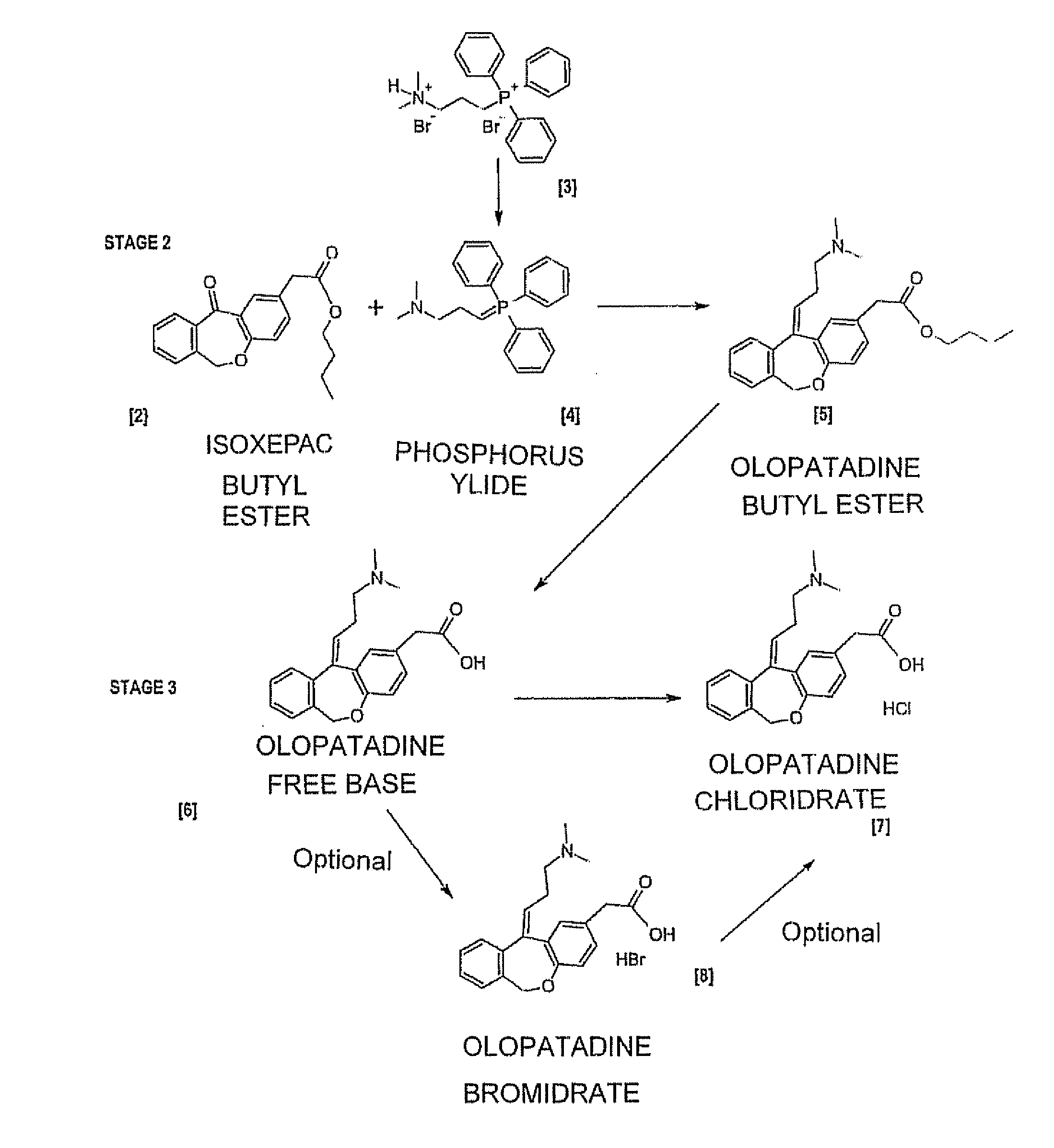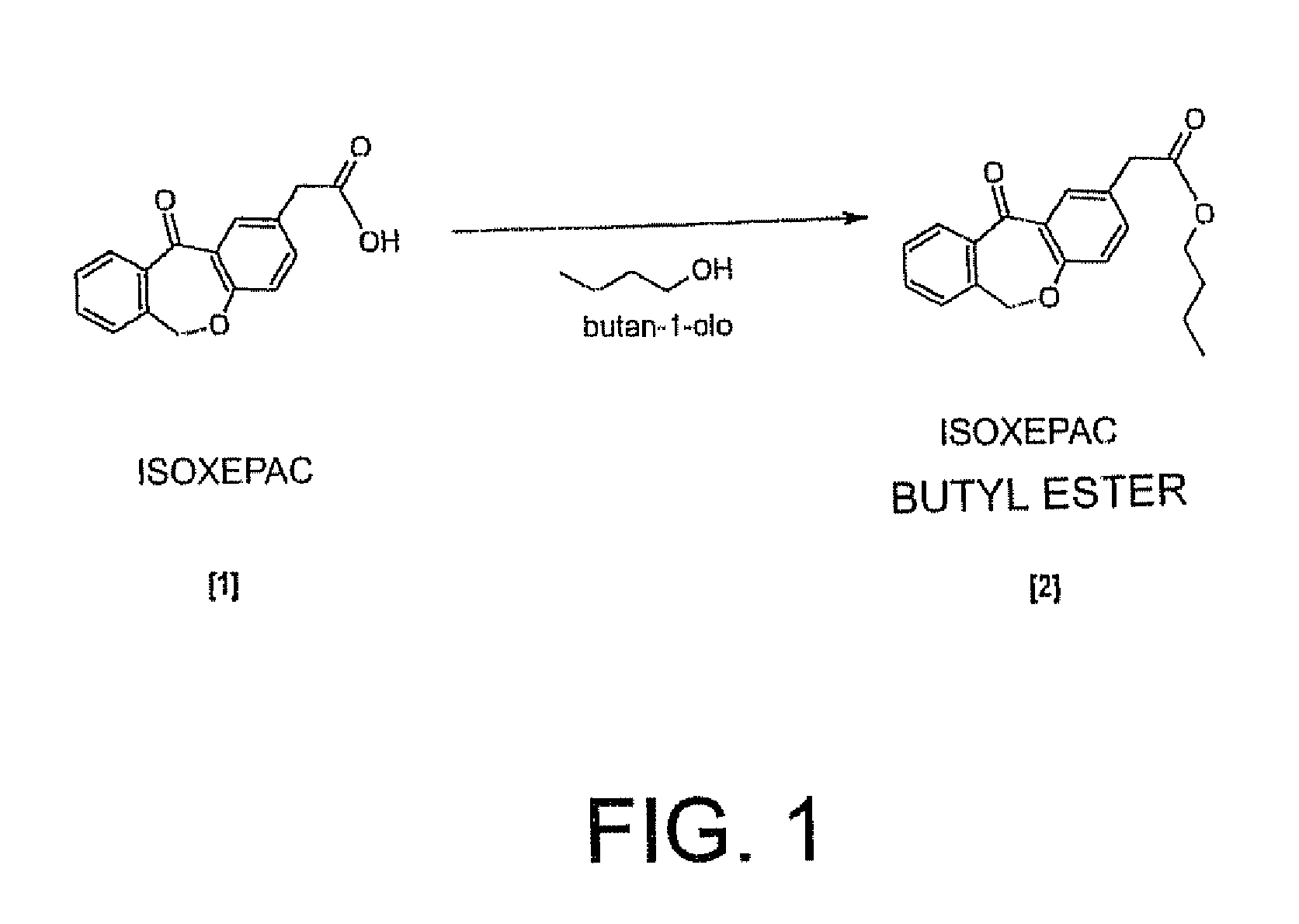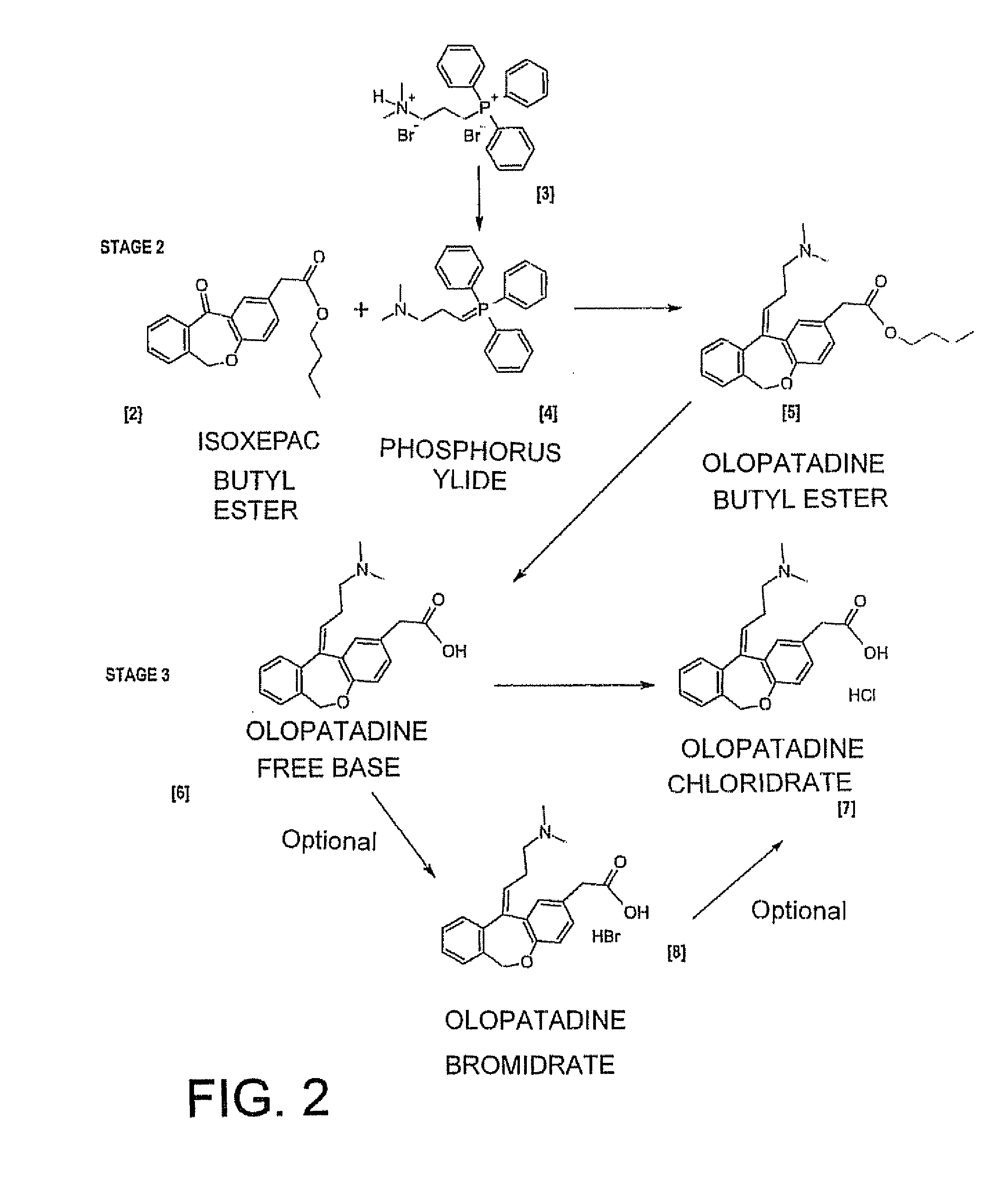Process for the preparation of olopatadine
a technology of olopatadine and process, which is applied in the field of new process for the preparation of olopa, can solve the problems of long process for the attainment of a pharmaceutically acceptable active substance, unsatisfactory purity, and limited final product yield
- Summary
- Abstract
- Description
- Claims
- Application Information
AI Technical Summary
Benefits of technology
Problems solved by technology
Method used
Image
Examples
example 2
[0078]The process according to Example 1 is repeated, but proceeding to isolate the olopatadine butyl ester intermediate in step b), as described below.
[0079]Load 29.6 g of 60% sodium hydride in mineral oil (4.0 eq.), 164.85 g of (3-dimethylaminopropyl) triphenylphosphine bromide-HBr (1.75 eq.) and 360 ml of THF (6 V) into a flask. Stir at T=0 / 5° C. for 30 minutes and then heat the mixture slowly to T=60° C. and stir at said temperature for 3 hours. Chill to a temperature of 0-5° C. and add a mixture consisting of 60 g of isoxepac butyl ester in 210 ml of THF over molecular sieves (3.5 V). Heat the reaction mixture to T=27-30° C. and stir at said temperature for at least 15 hours.
[0080]Having verified that the reaction has completed, chill to T=0-5° C., add 80 ml of purified water and then neutralise by adding 32% HCl until reaching pH 7.
[0081]Distil under vacuum until all the THF (at least 550 ml) is collected. Add 400 ml of toluene and 200 ml of purified water. Stir and then separ...
example 3
[0087]Preparation of Olopatadine Free Base
[0088]A RBF is charged with 19.6 g 60% sodium hydride in mineral oil (2.76 mol. equivs.), 117.7 g of (3-dimethylaminopropyl)triphenylphosphin Bromide hydrobromide (1.3 mol. equivs) and 300 mL of Methyl-THF on molecular sieves previously degassed by nitrogen bubbling.
[0089]Stir at T=0 / 5° C. for 30 minutes and then heat slowly the mixture at T=40° C. in about 1 hour.
[0090]Heat the mixture at reflux temperature (ca. 80-82° C.) in about 30 minutes and stir for at least 6 hours.
[0091]Cool down at T=38-42° C. in about 30 minutes and keep at the temperature for one hour.
[0092]In about 60 minutes and keeping the temperature at T=38 / 42° C. add the above prepared solution to a solution consisting in 60 g of Isoxepac butyl ester in 210 mL of Methyl-THF on molecular sieves previously degassed by nitrogen bubbling.
[0093]Stir the solution for at least 2 hours at T=38-42° C. When the reaction is considered completed, the mixture is cooled at T=0 / 5° C. in a...
example 4
[0096]Re-Crystallization of Olopatadine Free Base.
[0097]A RBF is charged with 50 g of Oloptadine free base (of Example 3) and 200 mL of DMF (dimethylformamide) and heated at T=95-105° C. until dissolution of the product. Cool down the solution at T=0-5° C. in about 2 hours and stir for 3 hours. The slurry is filtered and the product is washed with 85 mL of DMF at T=0 / 5° C. The product is dried at T=60° C. for at least 8 hours obtaining 45.0 g (yield=90%).
PUM
| Property | Measurement | Unit |
|---|---|---|
| temperature | aaaaa | aaaaa |
| temperature | aaaaa | aaaaa |
| temperature | aaaaa | aaaaa |
Abstract
Description
Claims
Application Information
 Login to View More
Login to View More - R&D
- Intellectual Property
- Life Sciences
- Materials
- Tech Scout
- Unparalleled Data Quality
- Higher Quality Content
- 60% Fewer Hallucinations
Browse by: Latest US Patents, China's latest patents, Technical Efficacy Thesaurus, Application Domain, Technology Topic, Popular Technical Reports.
© 2025 PatSnap. All rights reserved.Legal|Privacy policy|Modern Slavery Act Transparency Statement|Sitemap|About US| Contact US: help@patsnap.com



